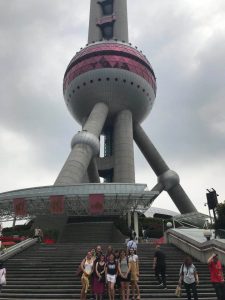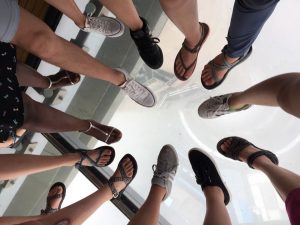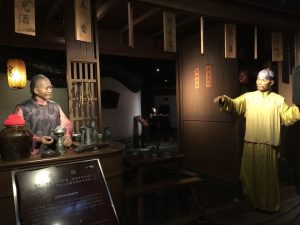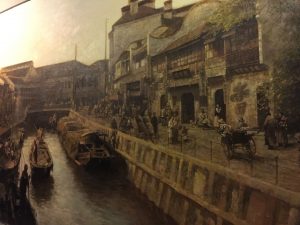This is the ninth and final in a series of blog posts from Whitties studying on Whitman’s Crossroads: Shanghai, China: Second Language Acquisition in China and the USA program this summer with Professor Lydia McDermott. Annie Xue ’21 is Undecided.
Many of my friends are confused when they found out that I am studying “abroad” in my hometown; after all, what’s the point of not being able to experience enough while others get to explore the city they completely do not know?
When I came back to Shanghai last year after high school graduation, I was so surprised to find out that everything can be paid for on phones and no one really used cash anymore. Even though I have been living in Shanghai for more than 17 years, considering that I was so used to a two-point life between school and home and I have been studying abroad for three years, I cannot say that I know Shanghai very well. I decided that it’s time to learn more about my city!
Several Crossroads Whitties asked me the question that if I feel weird going to all those touristy places with them. Sometimes it is: when we went to watch the acrobatic show in the second week, the roads near the stadium were jammed by tourists buses. For the most time, however, it is fun and rewarding to observe the city and explore new places, not just live in the city with a fresh eye and from a different perspective. In the past week, it is actually my first time going to all the places that we went to: Oriental Pearl TV Tower, the French Concession, the Propaganda Museum and M20 Art District.
As a city colonized by eight countries in the late 19th century and the early 20th century, Shanghai is famous for different styles of architectures left by western colonizers in the area called the Bund. For example, the house in the last picture above is the former residence, in the French Concession, of Sun Yat-sen, the first provisional president and founding father of the Republic of China. The visit to the History Museum of Shanghai in the Oriental Pearl TV Tower makes me realize how little I actually knew about the history of my hometown and how much more I still need to learn. The museum mainly exhibits with wax sculptures changing living styles in Shanghai from mid 19th century to late 20th century. Those beautiful exhibitions and pictures all look familiar, but if l am asked to explain them in detail, I will not be able to do it on the top of my head.
One of the places we went to last week that left me the deepest impression is the Propaganda Museum. It exhibits most of the Propaganda art works from the establishment of People’s Republic of China in 1949 to the end of the Cold Wat. (I don’t have any pictures, because it is not allowed to take pictures.) I did not feel comfortable the first moment I walked in. Except the introductions for each section, almost every note of each piece is in English and Spanish only; it is clear that foreign visitors are targeted. This is reasonable to some extent, but I think since it is essentially Chinese history, whether people want to face it or not, Chinese people like me should be more aware of and reflect on that particular period of history. The history, especially of Cultural Revolution, is heavy, but the exhibition was great and complete, inspiring my reflection on the history itself and people’s reactions and attitudes toward 20th century Chinese and world history.
I decided to attend this Crossroads course because of my interest in learning different languages and more about the Chinese and American education systems. Even though it sounds weird to study abroad in my hometown, it turns out to be a very exciting adventure and rewarding experience to explore the city I am most familiar with but still have a lot to learn about and reflect on.






